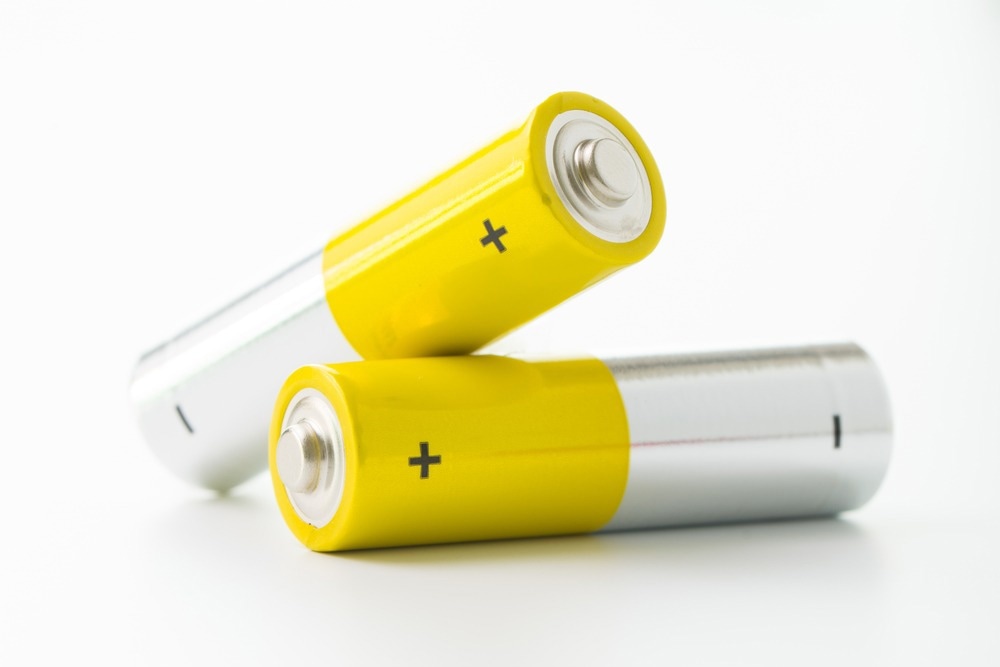A paper recently published in the journal ACS Applied Energy Materials reconsidered the feasibility of performing electrochemical impedance spectroscopy (EIS) on blocking electrodes to measure the conductivity of single-ion conducting solid polymer electrolytes (SIC-SPEs).

Study: Remark on Conductivity Measurements: The Special Case of Single-Ion Conducting Electrolytes on Blocking Electrodes. Image Credit: Kenishirotie/Shutterstock.com
Background
Lithium (Li) metal batteries with solid electrolytes are increasingly being investigated for next-generation systems due to the performance limitations of existing Li-ion (Li+) batteries. Li-metal batteries are considered beneficial in terms of energy density/specific energy and safety.
Recently, organic polymer-based materials have gained considerable attention as solid electrolyte hosts as they exhibit good stability and wettability with electrodes. However, SPEs possess poor Li+ transport/transference numbers and ionic conductivities compared to several inorganic solid electrolytes, which has limited the application of SPEs to higher temperatures.
Several studies were conducted to investigate the ionic conductivities of SPEs. Typically, EIS on blocking electrodes, such as stainless steel (StS), is performed to precisely determine the conductivity and impedance values of the electrolyte.
In SPEs, single ion conduction can reduce overvoltage, which can prevent the concentration polarization at the electrode-electrolyte interface and the resultant tip-growing Li dendrite growth. However, the concentration polarization can only be prevented above exceptionally high threshold currents, which is a significant challenge.
The covalent bonding between anions and the polymer hosts in SIC-SPEs ensures that the ion transport occurs only through the Li+. Although several variations were made in classes, fabrication, synthesis, and design of SIC-SPEs to achieve good transference numbers, the Li+ conductivity in these electrolytes remains a significant challenge.
Thus, good transference numbers were compromised due to poor Li+ conductivities. Simultaneously achieving both high Li+ conductivity and good transference number has been extremely difficult until now.
The Study
In this study, researchers reconsidered the method for conductivity determination using impedance spectroscopy in cells based on blocking electrodes by comparing dual-ion conducting (DIC)-SPE and SIC-SPE on non-blocking/Li and blocking/StS electrodes. The study aimed to realize more battery-realistic conclusions and methods to ensure accurate interpretations and facilitate more systematic research and development (R&D) of SPEs, specifically SIC-SPEs.
Poly(ethylene oxide) (PEO), polyethylene glycol dimethacrylate (PEGDMA), lithium bis-(trifluoromethanesulfonyl)imide (LiTFSI) for mobile anion-based SPE/ lithium 3-[(trifluoromethane)-sulfonamidosulfonyl]propyl methacrylate (LiMTFSI) for immobile anion-based SPE, and 2-hydroxy-2-methylpropiophenone were mixed and the mixture was stored for one h under vacuum in a pouch bag at 60 oC.
The resultant gum-like material was placed between mylar foil sheets and pressed for 10 min with 15 bar applied pressure at 60 oC to obtain membranes. Subsequently, a spacer was used to control the thickness of the as-prepared membranes in the range of 100 ± 5 μm.
An ultraviolet A (UV-A) cube was used to cure the membranes for 10 min at 60 oC. During UV-curing, the PEO-based network was formed, and the MTFSI− anion was attached to the PEO network in membranes with LiMTFSI.
Two electrode cells were assembled in a coin-cell type casing, where the polymer membrane was positioned inside the mylar foil spacer rings that were sandwiched between the Li/StS/copper (Cu)/aluminum (Al) electrodes.
An Arbin Instruments battery cell test system was employed to perform the galvanodynamic experiments in a climate chamber at 60 oC. Researchers also performed EIS in a one MHz to one Hz frequency range with 10 μA cm−2 applied current amplitude for mimicking the battery. A Horiba Scientific confocal Raman microscope was utilized to analyze the electrode interphase.
Observations
Cells based on blocking electrodes displayed a significantly lower impedance compared to cells based on non-blocking electrodes when DIC-SPEs were used, which indicated that the EIS on blocking electrodes was suitable to determine the ionic conductivity of DIC electrolytes.
However, cells based on blocking electrodes demonstrated an exceptionally high impedance compared to cells based on non-blocking electrodes when SIC-SPEs were used, indicating that the EIS on blocking electrodes was ineffective for determining the conductivity values for SIC-electrolytes as the method required anion mobility, which was impossible in SIC electrolytes.
The movement of both cations and anions was essential for charge compensation in cells based on blocking electrodes. However, the immobile MTFSI− ions in SIC-SPEs obstructed this process, leading to high electrolyte impedance and poor conductivity in these cells.
Thus, the conductivity values obtained for cells based on blocking electrodes/StS with SIC-SPEs were irrelevant for battery-relevant applications based on non-blocking electrodes, such as Li, where anion movement does not play a significant role in ionic conductivity as electroneutrality in the cell can be realized by Li+ movement. Lower impedances were achieved in Li||Li cells with SIC-SPEs, leading to higher conductivity.
The SIC-SPE decomposition on the non-blocking/Li electrodes owing to ineffective solid electrolyte interphase steadily increased the cell impedance, indicating that Li electrodes were less suitable for impedance investigations. Cu||Cu and Al||Al cells, which displayed a non-blocking behavior along with Li||Li cells, were more suitable for obtaining more battery-realistic and practical impedances without interphase issues.
To summarize, the findings of this study demonstrated that EIS on blocking electrodes is an ineffective approach for conductivity investigation of SIC-SPEs for battery application. Non-blocking electrodes, specifically Al and Cu, are suitable for performing battery-relevant impedance investigations.
More from AZoM: A Closer Look at Semiconductor Test Equipment
Disclaimer: The views expressed here are those of the author expressed in their private capacity and do not necessarily represent the views of AZoM.com Limited T/A AZoNetwork the owner and operator of this website. This disclaimer forms part of the Terms and conditions of use of this website.
Source:
Winter, M., Stolz, L., Pfeiffer, F. et al. Remark on Conductivity Measurements: The Special Case of Single-Ion Conducting Electrolytes on Blocking Electrodes. ACS Applied Energy Materials 2022. https://doi.org/10.1021/acsaem.2c01034